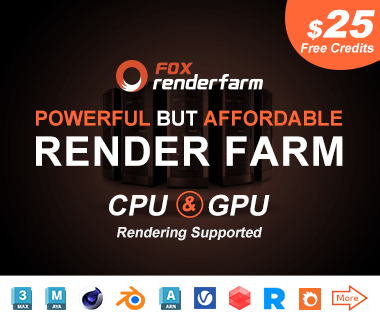CGI vs. 3D Animation: A Comparative Guide

In today’s digital age, visual effects and animations have revolutionized how stories are told and experiences are crafted. CGI and 3D animation are often used interchangeably, but they represent distinct aspects of digital creation. While both rely on advanced computer technologies, their applications and purposes differ significantly.
CGI 3D is a broad term that encompasses any digitally created visual content. In contrast, 3D animation explicitly animates three-dimensional objects to bring characters and environments to life through movement. This article delves into the core distinctions between these two concepts, examining their uses and key processes.
Part 1. What Is CGI?
The term "computer-generated imagery" describes visual content produced using a dedicated computer program. It spans the spectrum of digital visuals, from simple static images to highly complex special effects. The possibilities of CGI 3D animation are virtually limitless, as it lets you create everything from photorealistic environments to fantastical creatures.
Leveraging advanced algorithms and rendering techniques will enable artists to produce either impossible or impractical visuals to develop in real life. The versatility and realism of CGI 3D are fundamental to modern media, empowering creators to push visual boundaries. Its rise has also made traditional effects, such as model making and matte painting, less common.

Part 2. What Is 3D Animation?
3D animation is creating lifelike movements for three-dimensional objects using computer software. Unlike static 3D models, animation brings characters, objects, and environments to life by defining their motions, interactions, and behaviors. This process involves modeling, rigging, and animating. Artists design 3D objects and create a virtual skeleton (rig), finally followed by animating the movements frame by frame or using automated keyframes.
The capacity of CGI 3D animation to emulate real-world physics or construct imaginative scenarios has effected a transformation in the presentation of narratives and concepts. By blending artistry with technology, it continues to push the boundaries of creativity and innovation.

Part 3. What’s the Difference Between CGI and 3D Animation?
While closely related concepts, they serve different purposes in digital creation. CGI is a comprehensive term that includes computer-generated visuals, with three-dimensional art being one example. In contrast, 3D animation is specifically concerned with creating movement for objects and characters. To clarify these distinctions, the table below breaks down their key 3D animation vs CGI differences:
|
Aspect |
CGI |
3D Animation |
|
Definition |
Refers to any visual content created digitally using computer software. |
Focuses on adding motion to 3D objects and characters. |
|
Scope |
Includes static images, environments, special effects, and animations. |
A subset of CGI specifically deals with motion and interaction. |
|
Primary Use |
Used for creating visual effects, environments, and photorealistic assets. |
Used to tell stories, create character movements, and simulate dynamics. |
|
Process |
Involves modeling, texturing, lighting, rendering, and compositing. |
Involves modeling, rigging, keyframing, and simulating movements. |
|
Applications |
Films, games, advertisements, architectural visualization, and more. |
Films, video games, education, virtual simulations, and storytelling. |
|
Realism vs. Dynamics |
Focuses on creating visually realistic elements. |
Prioritizes dynamic and natural movement of objects or characters. |
|
Examples |
Explosions, digital backdrops, product renders, and creature designs. |
Walking characters, flying objects, and interactive 3D simulations. |
Part 4. What are CGI and 3D Animation Used For?
These concepts have become indispensable tools across various industries, transforming content creation and consumption. Their applications extend beyond entertainment, influencing fields like education, marketing, and design. Summarized below is a breakdown of CGI 3D primary uses to help you understand the utility of this term:
Applications of CGI
- Video Games: Helps in designing immersive environments, dynamic characters, and intricate game elements.
- Advertising: Enables the creation of eye-catching product renders and commercial effects to captivate audiences.
- Architecture: Assists in visualizing architectural designs, interiors, and landscapes before construction.
- Medical Simulations: Used for anatomical visualizations and surgical procedure training.
- Film and Television: Used for creating realistic visual effects, digital backdrops, and otherworldly creatures that cannot be achieved through practical effects.
Applications of 3D Animation
- Storytelling: Crafts compelling characters and narratives that resonate in the world of animation across film, television, and online platforms.
- Gaming: Adds dynamic character movements and environmental interactions for a lifelike experience.
- Virtual and Augmented Reality: Enhances simulations by animating 3D objects for immersive experiences.
- Simulations and Training: Used in fields like aviation and military for training scenarios with animated 3D models.
- Education: Simplifies complex concepts by creating interactive and animated models for better understanding.
Part 5. The Key Process of CGI 3D Animation
The creation of CGI 3D animation involves a detailed workflow that integrates artistic vision with technical precision. Each stage in the process contributes to transforming ideas into compelling visuals with realistic motion. Below is an overview of the key steps involved in CGI 3D animation:
1. Concept and Storyboarding
Before production begins, creators outline the project’s vision through concept art and storyboards. These sketches blueprint the narrative, visual style, and shot composition. Storyboarding ensures consistency in storytelling and serves as a communication tool for the team.
2. 3D Modeling
Artists create 3D objects or characters using specialized software. This step involves designing each element's geometry, shape, and details, ensuring they align with the project's requirements. Models must balance visual complexity with computational efficiency to meet rendering needs.
3. Texturing and Shading
To add realism, the art of texturing is carefully applied to the 3D models. Shading defines how surfaces interact with light, enabling lifelike appearances, such as metallic reflections or fabric textures. This stage ensures each object has the appropriate material properties, adding depth and realism to the scene.
4. Rigging and Skinning
Rigging involves building a virtual skeleton for CGI 3D models, enabling movement. Skinning ensures the character's outer surface deforms naturally as the rig moves, mimicking real-world physics. Proper rigging allows for fluid and believable animation, which is critical for character-driven projects.
5. Animation
Animators breathe life into the models by creating movements and interactions. Techniques like keyframing, motion capture, or physics simulations help generate fluid, dynamic actions. This stage requires precision to align motion with the intended mood and narrative.
6. Lighting and Rendering
Doing so will help set the mood and enhance depth while illuminating scenes realistically. Rendering transforms the three-dimensional scenes into 2D images or sequences, generating the final output with high-quality visuals. Efficient rendering techniques ensure that deadlines are met without compromising quality.
7. Compositing and Post-Production
You now integrate the rendered animations with other visual elements, such as live-action footage or background environments. Post-production adds finishing touches, including color grading and visual effects. These final enhancements ensure the animation aligns with the project’s creative vision.

Pro Tip: Improve Rendering Efficiency - Using Fox Renderfarm Service
Rendering is a resource-intensive process that can strain local devices, especially when working on complex projects. When done through unoptimized machines, it can become time-consuming and potentially delay project timelines. To overcome these challenges and enhance rendering efficiency, utilizing a professional render farm service is highly recommended.

One such leading service is Fox Renderfarm, a world-class CPU and GPU cloud render farm. It offers secure, fast, and cost-effective rendering solutions for CGI 3D animation. By leveraging Fox Renderfarm, users gain access to high-performance servers. These are capable of significantly reducing rendering times, ensuring projects are completed promptly and efficiently.
Key Features of Fox Renderfarm
- Security and Reliability: Fox Renderfarm is ISO27001 certified and a Trusted Partner Network (TPN) member, ensuring the best possible protection for your assets and information.
- Ease of Use: The platform offers effortless usability, making rendering efficient and straightforward. Users can instantly fire up thousands of rendering nodes with no waiting time.
- Software Support: It works with the most popular 3D programs and plugins worldwide to cater to a wide range of needs. This includes apps like Maya and Blender, as well as renderers such as V-Ray and Arnold.
- Fast Rendering Speed: Experience lightning-fast rendering and rapid turnaround times for even the most complex projects with this cloud platform. This even helps users with low-specification devices to render their projects efficiently and on time.
- Scalability: From small personal animations to large-scale commercial productions, this service adapts to projects of any size. This platform also allows companies and enterprises to manage their projects with high-scale data security to protect from hackers.
Conclusion
In summary, CGI 3D animation plays essential roles in modern visual media, with distinct processes and applications. To optimize rendering efficiency and overcome the limitations of local devices, using a render farm service like Fox Renderfarm is a smart choice.
With its secure and user-based platform and powerful features, it ensures faster and high-quality rendering, allowing creators to focus on what matters most, bringing their visions to life.
Recommended reading
Top 9 Best And Free Blender Render Farms of 2025
2024-12-30
Revealing the Techniques Behind the Production of Jibaro "Love, Death & Robots", Which Took Two Years to Draw the Storyboard
2025-02-10
Top 10 Free And Best Cloud Rendering Services in 2025
2025-03-03
Top 8 After Effects Render Farm Recommended of 2025
2025-02-10
Top 5 Best and Free 3d Rendering Software 2025
2025-02-10
Shocked! The Secret Behind Using 3D to Make 2D Animation was Revealed!
2025-02-10
How to Render High-quality Images in Blender
2024-12-04
Easy Cel Shading Tutorial for Cartoon in Blender Within 2 Minutes
2025-02-10
Partners
Previous: Master Creativity: Learn How to Create Stunning 3D Art from Scratch
Next: Best 3D Modeling Software for Beginners: 7 Easy Picks for 2025
Interested






